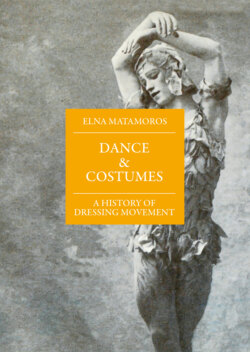Читать книгу Dance and Costumes - Elna Matamoros - Страница 6
На сайте Литреса книга снята с продажи.
INTRODUCTION
ОглавлениеThe key to this volume is that it is ‘A History of Dressing Movement’, for what Elna Matamoros is doing in this volume is not simply looking at costumes worn by dancers but thinking about the effect they have on the moving body. Her own experience is as a dancer and teacher and this comes across as she looks at the costumes. They are not garments in isolation. They have a purpose to reveal, conceal, extend or alter the dancer’s movement not simply decorate the body. At times the body disappears, and we are left with simply traces of light. The costumes are considered here with a real appreciation of their purpose in conjunction with choreography.
To read Dance & Costumes is to time travel, back and forth between the court of Louis XIV and the Twenty First Century and to become aware of the milieu for which different styles of costumes were created. As a dancer with both a European and American background Elna has chosen to look at a wide range of productions of theatre dance; ballet, Spanish and modern dance. Toe shoes and tutus are discussed but so are shifts, tunics, body-tights and lengths of fabric. Does the costume liberate the dancer to move freely, or does its structure hamper movement? What happens between the external costume admired by the audience and the dancer’s body? Is the dancer corseted? Does the dancer hide behind a costume that is really a prop?
In this well-illustrated volume, Elna faces the challenge of interpreting iconography whether she is looking at designs, illustrations or photographs. Was the designer’s drawing modified by the maker of the costume to enable the dancer to feel more comfortable, or to make it acceptable to the audience? How and why did the costume change from one period to another? Did the illustrator draw what was presented or the illusion the producers were putting across? When in relation to the performance or creation of a production was the photograph taken?
In looking at the costumes themselves questions are asked. What is the effect of the weight, colour, transparency of the fabric and what challenges presented its nap, elasticity or effect under lights? Elna has consulted with wardrobe staff to appreciate their challenges as well as understood from her own experience the difference a costume makes to a dancer. This is then related to a historical perspective. There is a great deal more in designing for dance than an art-work on paper being translated into a decorative garment worn by a dancer. It becomes part of the dance and, as this volume reveals, the most interesting costumes are those created in collaboration with the movement the choreographers and dancers devise.
Jane Pritchard
Curator of Dance, Victoria and Albert Museum, London
